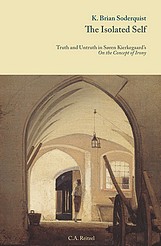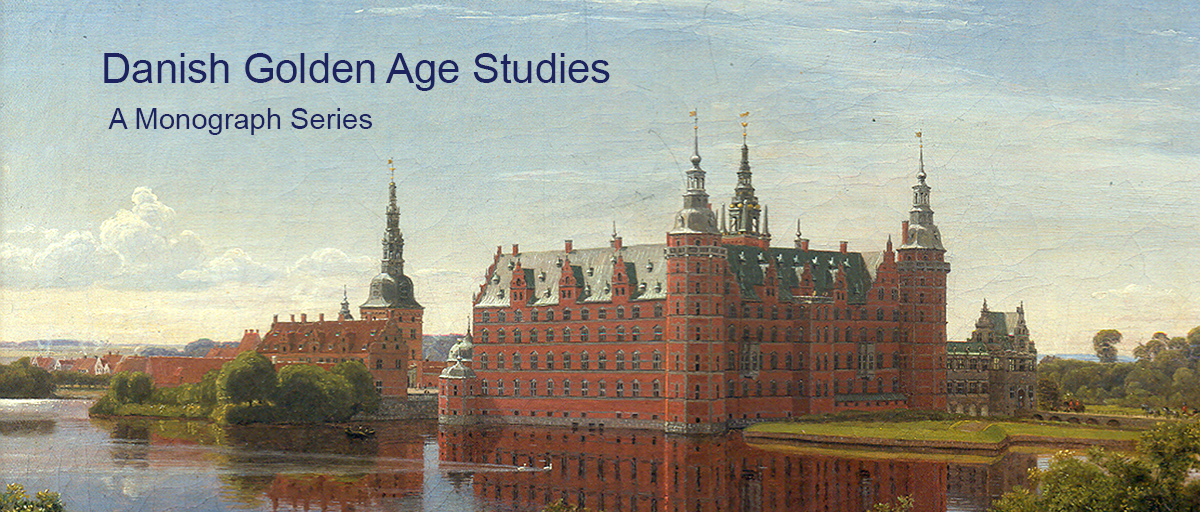
|
The monograph series Danish Golden Age Studies (ISSN: 1903-3338) is dedicated to advancing international research on the Danish Golden Age, i.e., the period from 1800 to around 1850 when writers and thinkers such as Hans Christian Andersen and Søren Kierkegaard were active. The series is interdisciplinary and thus includes research monographs in areas such as philosophy, theology, literature, history, aesthetics, art history, and drama. It features different kinds of monographs, such as Ph.d. dissertations, Habilitation theses, anthologies, and conference proceedings.
The goal of this series is to promote international interest in this rich cultural period of Danish history. Danish Golden Age Studies builds on the work published in the parallel series, Texts from Golden Age Denmark, which features English translations of key Danish texts from the period. |
The
General Editor of Danish Golden Age Studies is
Jon Stewart.
Editorial Board: Finn Gredal Jensen, Mads Sohl Jessen,
Nathaniel Kramer, and Katalin Nun Stewart
The Crisis of the Danish Golden Age and Its Modern Resonance
Edited by Jon Stewart and Nathaniel Kramer
Copenhagen: Museum Tusculanum Press 2020
Volume 12 of the series
Date of Publication: 2020
Hardback. xiv+276pp. ISBN 978-87-635-4670-6
The historical circumstances of the Danish Golden Age are well known: the Napoleonic Wars, the bombardment of Copenhagen, the state bankruptcy in 1814 with the ensuing financial crisis, the Revolution of 1848, and the establishment of a parliamentary democracy in 1849. There were peasant reforms, religious upheavals, and changes in class and social structures. These events constituted the milieu in which the Golden Age was born and developed. The guiding idea of the present volume is that these different crises served not just as a backdrop or as obstacles but rather as catalysts for the flowering of culture in the Golden Age.
Despite their many debates and polemics among themselves, the leading figures of Golden Age Denmark were generally in agreement about the fact that their age was in a state of crisis. The dramatic events spilled over into the various cultural spheres and shaped them in different ways. The articles in this volume trace the different crises as they appear in literature, criticism, religion, philosophy, politics and the social sciences. The contributing authors draw compelling parallels between the perceived crisis of the Golden Age and the acute issues of our own day. The articles collected here thus together show the continuing relevance of the Golden Age for readers of the twenty-first century.
Date of Publication: 2019
Hardback.
xviii+407pp. ISBN 978-87-635-4642-3
Kierkegaard
readers are familiar with his dogged polemic with Hegelianism,
his critique of Friedrich von Schlegel’s Romantic irony, and
his visit to Schelling’s lectures in Berlin. However, these
are only a few well-known examples of a much deeper relation
of influence and inspiration.
Kierkegaard read German fluently and was interested in many
different authors and thinkers from the German-speaking
countries. The auction catalogue of his personal library
reveals a wealth of works in German from a number of different
fields. Given his famous criticisms of the Hegelians,
Schlegel, and Schelling, one might be tempted to believe that
Kierkegaard was anti-German. But this is clearly not the case
since he had high praise for some German thinkers such as
Hamann, Lessing and Trendelenburg.
The present work is dedicated to an exploration of
Kierkegaard’s relation to different aspects of Germanophone
culture. Its goal is to gain a better appreciation of the
importance of his various German sources for his thought. The
points of contact are so numerous that it can truly be said
that if it were not for the influence of German culture,
Kierkegaard would not have been Kierkegaard and the Danish
Golden Age would not have been the Golden Age.
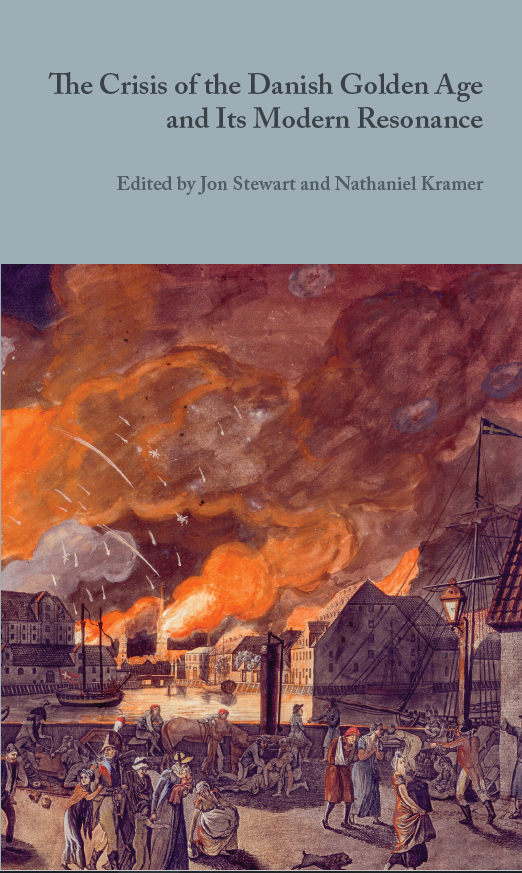
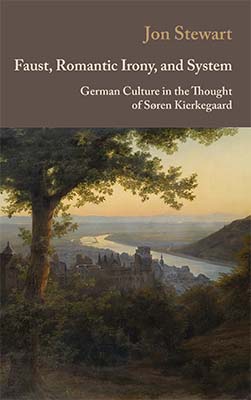
Previously Published Volumes
K.
Brian Soderquist
The
Isolated Self
Truth and Untruth in
Søren Kierkegaard's
On the Concept of Irony
Date of Publication: 2007. Date of Paperback Edition: 2013.
Hardback. viii+247pp. ISBN 978-87-635-3090-3
At the same time, irony is said to be a hindrance to selfhood because the self fails to become a part of the social world in which it resides. The Isolated Self thus puts the existential tension of On the Concept of Irony into relief and suggests how it sets the stage for the rest of Kierkegaard’s authorship.
As the basis for these findings, The Isolated Self reconstructs the horizon of understanding during Kierkegaard’s time, including Hegel’s interpretation of Socrates and Friedrich Schlegel’s romantic literature. In addition, the work explores material from the little-known Danish discussion of irony in the works of Poul Martin Møller, Johan Ludvig Heiberg and Hans Lassen Martensen.
Robert Leslie Horn
Positivity and Dialectic
A Study of the Theological Method of Hans Lassen Martensen
Date of Publication: 2007
Hardback. xviii+246pp. ISBN 978-87-635-3089-7
The special target of these polemics is the attempts of the Danish theologian, Hans Lassen Martensen (1808-1884) to bend the Hegelian philosophical method to his own theological purposes. The intrinsic thesis is that Martensen’s development is almost entirely within the lines of a form of theological intuitionism to which his use of Hegel bears only an external relation. Hence, if it is supposedly Hegelianism which Kierkegaard attacks in the writings of Martensen, it is a highly modified and atypical form of it.
This work traces Martensen’s theological intuitionism through four stages in the period which is pertinent for the study of Kierkegaard, the years 1833 to 1850.
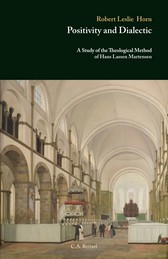
A
History of Hegelianism in Golden Age Denmark
Volume
3 of the series
Tome
I: The Heiberg Period: 1824-1836
Tome II: The Martensen Period: 1837-1842
Hardback. xxi+629pp. ISBN 978-87-635-3086-6
The present tome is the first of a three-volume work dedicated to exploring the profound influence of G.W.F. Hegel’s philosophical thinking in Golden Age Denmark. This initial volume covers the period from the beginning of the Hegel reception in the Danish Kingdom in the 1820s until 1836.
The dominant figure from this period is the poet and critic Johan Ludvig Heiberg. While Søren Kierkegaard’s polemic with the Danish Hegelians is well-known, the actual texts and ideas of these thinkers have received little attention in their own right.
The present work demonstrates that this largely overlooked tradition of Hegel reception played a profound and indeed constitutive role in many aspects of Golden Age culture: philosophy, theology, literature, poetry, law, journalism, the arts, etc. Moreover, it brought into its orbit most all of the main figures from the period.
________________________
Reviews
“Das
Buch
zeichnet sich aus durch eine virtuose und akribische
Materialkenntnis der dänischen Hegelrezeption. Ein solches
Buch kann man nur schreiben nach jahrzehntelanger Arbeit am
Thema."
Helmut Schneider, Hegel-Studien,
vol. 46, 2011, p. 279.
________________________
“This is the first of three ‘tomes’ of Jon Stewart’s Habilitationsschrift in philosophy at the University of Copenhagen; the second concerns The Martensen Period: 1837-1842, and the third Kierkegaard and the Left-Hegelian-Period: 1842-1860. Together they make up volume 3 of Stewart’s series Danish Golden Age Studies. Their purpose is ‘to put forth the basic information about the Danish Hegel reception in a clear and readable fashion.’ Such information needs to be put forth because, unlike Hegel’s reception throughout the rest of Europe and beyond, Danish Hegelianism remains largely but unjustly neglected in scholarly circles…. [R]eaders will appreciate Stewart’s tireless and productive labors, both here and elsewhere, to illuminate this neglected but important area of European thought.”
Paul Vincent Spade, Journal of the History of Philosophy, vol. 41, no. 1, January 2009, pp. 150-151.
“This is a large-scale undertaking and a work rich in perspectives since it gives us a somewhat different picture of the contemporary age which formed Søren Kierkegaard…. It is a more panoramic, dynamic and open picture that Stewart’s treatise sketches of Danish thinking in this period—a picture that helps us to understand why there would also have been a philosophical Golden Age even without Kierkegaard, however shocking that might seem.”
Lasse Horne Kjældgaard, Politiken, February 9, 2008, section “Bøger,” p. 13.
“The work…is
the first extensive presentation, in either the Danish
research world or the international research world, of a
series of texts that together constitute a central line in
the intellectual life of the Danish Golden Age. The author
argues that not a few of these texts represent original
contributions to the age’s philosophical discussions. Not
least of all the international research into Søren
Kierkegaard’s universe of thought will be able to make use
of the material that the author presents and the conclusions
he draws…. This is an impressive work based on extensive
knowledge of the texts of the Danish Golden Age and those
relevant for Hegel’s thought. The author aims at
exhaustiveness, not least of all with the bibliographical
work. He brings forth a series of figures, both large and
less significant, from the period treated, whose written
works display a familiarity with Hegel’s philosophy, or in
which Hegel is at least referred to….No future work on the
Danish Golden Age and its leading figures will be able to
pass by the results that the author has achieved…. The
author with his treatise has demonstrated significant
scholarly insight and maturity and has moved research into
the Danish Golden Age a large step forward….There can be no
doubt that his work will influence both the Danish and the
international Kierkegaard research for a long time to come.”
Carl Henrik Koch, University of Copenhagen
________________________
"Der
bedeutendste Beitrag zur Rekontextualisierung von
Kierkegaards Denken außer Søren
Kierkegaards Skrifter
wurde immerhin vom in Amerika geborenen Jon Stewart
geleistet. Der seit 1996 im
Sören-Kierkegaard-Forschungscenter angestellte Forscher
hat zunächst zwei umfangreiche Bände unter dem Titel A
History of Hegelianism in Golden Age Denmark
(2007) herausgegeben."
Johnny
Kondrup, in Existenz
und Reflexion. Aktuelle Aspekte der Kierkegaard-Rezeption,
ed. by Matthias Bauer and Markus Pohlmeyer, Hamburg: Ingel
Verlag 2012.
________________________
Tome II: The Martensen Period: 1837-1842
Date of Publication: 2007
Hardback. xx+775pp. ISBN 978-87-635-3101-6
This second tome treats the most dynamic period in the history of the Danish Hegel reception, namely, the years from 1837 to 1842. The main figure in this period is the theologian Hans Lassen Martensen who made Hegel’s philosophy a sensation among the students at the University of Copenhagen in the late 1830s.
This period also includes the publication of Johan Ludvig Heiberg’s Hegelian journal, Perseus, in 1837 and 1838, and the monumental review of it by Frederik Christian Sibbern. During this time Hegel’s philosophy flourished in unlikely genres such as drama, with Heiberg’s speculative comedy, Fata Morgana (1838), and lyric poetry with his New Poems (1841), which included his satirical classic, “A Soul after Death.” This period also witnessed Hegel’s philosophy make inroads in fields such as jurisprudence and art criticism. During these years Hegelianism enjoyed an unprecedented success in Denmark that began to fade as it gradually became perceived as a dangerous trend.
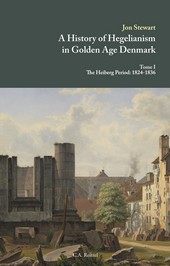
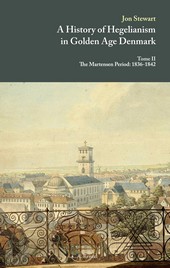
Date of Publication: 2008
Hardback. xvi+216pp. ISBN 978-87-635-1097-4
Kierkegaard’s relationship with Martensen was multidimensional and volatile. He functioned as Kierkegaard’s personal acquaintance and occasional conversation partner, tutor, teacher, dissertation committee evaluator, representative of Golden Age Danish culture, book writing and selling competitor, fellow Lutheran and bishop. While the two never saw things eye-to-eye, and Kierkegaard’s dislike for Martensen received expression in his writings, this spiteful ridicule and derision was directed toward one upon whom Kierkegaard was significantly dependent.
Kierkegaard’s intellectual life and work underwent extensive development during the two decades of his literary output from 1834 to his death in 1855. These developments can be better grasped by investigating developments that Martensen himself was going through. Martensen’s career progressed from an early concern with philosophy of religion addressed to the public of the academy, to dogmatic theology addressed to the public of the church, to practical theology addressed to the public of society. The questions and issues preoccupying Martensen changed with these progressions, and these changes did not go unnoticed by Kierkegaard.
The case is here argued that Kierkegaard followed Martensen’s intellectual development very closely and that Martensen’s shifting theological agenda in fact notably shaped the evolving agenda of Kierkegaard’s own developing religious thought.
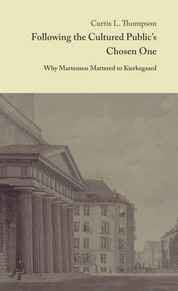
Philosopher,
Littérateur, Dramaturge, and Political Thinker
Edited by Jon Stewart
Date of Publication: 2008
Hardback. xxii+548pp. ISBN 978-87-635-1096-7
This volume is a collection of articles dedicated to the different dimensions of Johan Ludvig Heiberg’s thought. It is an interdisciplinary collection in an attempt to cover as many different aspects of Heiberg’s intellectual activity as possible. Thus, scholars from fields such as philosophy, literature, theology, philology, history, and art history are represented with original contributions.
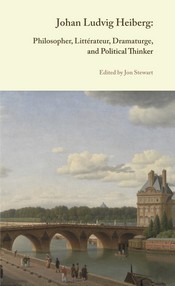
Theologian,
Philosopher and Social Critic
Edited by Jon Stewart
Date of Publication: 2011
Hardback. xv+351pp. ISBN 978-87-635-3169-6
In the past few decades there has, however, been a renewed appreciation for Martensen as an important thinker in his own right. The present anthology attempts to bring together the works of the leading Danish and international scholars responsible for this recent surge of interest.
In order to capture the different aspects of Martensen’s thought, the volume has been organized into three main rubrics: I. Theology, II. Philosophy, and III. Politics and Social Theory. Collectively, the articles featured here treat Martensen’s main works from his dissertation, On the Autonomy of Human Self-Consciousness in 1837 to his monumental, three-volume Christian Ethics from the 1870s. The authors demonstrate that the problems critically addressed by Martensen in the Danish Golden Age are still very much with us today in the twenty-first century.
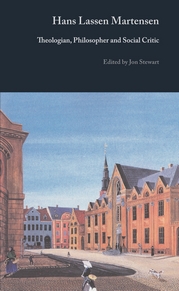
The
Heibergs and the Theater
Edited by Jon Stewart
Date of Publication: 2012
Hardback. ix+351pp. ISBN 978-87-635-3897-8
Not
only
was Johan Ludvig Heiberg the most famous theater critic of the
Danish Golden Age, but he also wrote the most important
aesthetic essays about theater. Some of his dramatic works
belong to most successful plays ever performed at the Royal
Theater. Moreover, Heiberg was married to one of the greatest
Danish actresses of the nineteenth century. Both his wife
Johanne Luise Heiberg and his mother Thomasine Gyllembourg wrote
dramatic works that were performed on the stage of the Royal
Theater. At the end of his career Heiberg finally became
director of the Royal Theater from 1849 to 1856.
Seen
from
today’s point of view Heiberg dominated theater life in the
mid-nineteenth century Denmark in an absolutely unique and
astonishing way. But it is not only because of his remarkable
position in the small literary field of Golden Age Denmark that
his dramatic works and his theory of theater are worthy of study.
As the articles in this volume show, Heiberg’s lifelong occupation
with theater was closely tied to his far-reaching philosophical
and political interests. In this respect his aesthetic essays as
well as his plays offer useful material for those hoping to obtain
new insight into the cultural life of Golden Age Denmark in
general.
________________________
Reviews
András Nagy, European Journal of Scandinavian Studies, vol. 45, no. 2, 2015, pp. 240-248.
"The Heibergs and the Theater is clearly an important contribution to the evolving field of Heiberg studies. It provides a wealth of valuable insights into the history and culture of the Danish Golden Age and, of course, into the Heibergs themselves. For the most part, the pieces work nicely together to create a significantly new and provocative picture of the Danish Golden Age, even as they cross sometimes well-trodden territory. What is perhaps most notable is the nuance and complexity explored by the volume….Two decades ago, one would have been hard- pressed to find such discussions of the Heibergs. This volume represents not just an important addition to the field, but also a significant leap forward in the growing sophistication of the field."
Nate Kramer, Scandinavian Studies, vol. 87, no. 2, 2015, pp. 303-309.
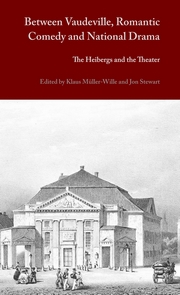
Women
of the Danish Golden Age
Date of Publication: 2013
Hardback. xvi+200pp. ISBN 978-87-635-3913-5
The present monograph wishes to fill this gap by presenting the role of women in literature and theater and by discussing the more general question of the emancipation of women of the time. The book is divided into three main parts, based on three main areas of interest. Each area has its central figure, who can be regarded as representative for the respective field. Thus, the first part, dedicated to literature, has as its focal point Thomasine Gyllembourg (1773-1856) and her writings. The second part deals with the theater and the most famous actress of the period, Johanne Luise Heiberg (1812-90). Finally, the third part discusses the question of the emancipation of women examined through the case of the controversial author Mathilde Fibiger (1830-72).
________________________
Reviews
- J. Sundquist, Choice, vol. 51, 2013
"Through countless sources and with a very well developed understanding of the period, Katalin Nun guides the reader through the landscape of high culture in Copenhagen in the "Golden Age". … Not only are personalities such as Johanne Louise Heiberg, Thomasine Gyllembourg and Mathilde Fibiger interesting by virtue of their own writings; in her account, Nun manages to prove their impact on other thinkers of their time, for example, on Johann L. Heiberg who was greatly influenced by all three women, and so was Kierkegaard to a degree. … The reader, who is unfamiliar with the details of the period's debates and publications, is presented with a methodical and balanced introduction, while the insider obtains more insight into relationships and intellectual exchanges which have not always been granted appropriate attention."
- Ann-Sofie Gremaud, NORDEUROPAforum, 2014.
Read the full review here
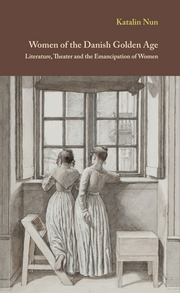
Date of Publication: 2015
Hardback. xvi+337pp. ISBN 978-87-635-4269-2
The present work traces the different aspects and dimensions of this crisis by means of a series of case studies. It shows how the perception of the crisis was a kind of spirit that haunted many of the intellectuals and artists of the period. But far from being something negative or destructive, it was a motivating and stimulating force that helped to make the Golden Age what is was. It made artists and thinkers more willing to break with the past and seek new solutions and approaches. Thus it is argued that the crisis can be seen as one of the central defining elements of what we know as Danish Golden Age culture. But the present work is not a purely historical study since it is shown that many of the key elements of the crisis can still be found in our modern world today. Heibergs diagnosis of the period as suffering from relativism, subjectivism and nihilism sounds strikingly familiar to the modern reader. When seen in this manner, the Danish Golden Age becomes profoundly interesting and relevant for the broad spectrum of problems of modernity.
________________________
Reviews
“The first half of the nineteenth century in Denmark, somewhat
ironically known as the Golden Age, was steeped in economic,
political, and religious crisis. Jon Stewart has done more than
any other scholar or editor in bringing this fascinating and
enigmatic era in Scandinavian letters to an English-speaking
audience. In his latest book, The Cultural Crisis of the
Danish Golden Age: Heiberg, Martensen and Kierkegaard,
Stewart teases out how several of the nation's leading writers
and critics articulated the speed at which Danish culture was
changing, while also mapping out how they attempted to solve the
looming crisis entailed in these changes….Overall, Stewart’s
work demonstrates how the pervasiveness of critical discourse
was not in tension with the notion of a Golden Age but rather
that the tension inherent in that multi-layered discourse
created the matrix of success, which in essence defined the
Danish Golden Age. Although Søren Kierkegaard is a major subject
of interest for Stewart’s project, something consistent with his
earlier work, the contours of this monograph extend beyond the
figure of Kierkegaard to thinkers perhaps not as well-known to
more general readers. Such figures as Johan Ludvig Heiberg, Hans
Lassen Martensen, and Eggert Christopher Tryde are also
contextualized in terms of Stewart’s reassessment of cultural
effusion. The book also provocatively positions the Danish
Golden Age in conversation with our present day.
…Stewart's study is groundbreaking in two distinct ways.
Unlike many of his publications on Søren Kierkegaard that are
preoccupied with Kierkegaard’s relationship to German
philosophy, this book is predominantly an attempt to read
Kierkegaard in the context of Danish letters. Although Hegel’s
philosophy is still at the core of many of these debates, the
substance of the book is dedicated to how Danish thinkers
responded to investigations and inquiries vis-à-vis their
contemporary countrymen. In effect, Stewart is calling for a
rehabilitation of “the contemporary horizon of the text in
Kierkegaard's time” (p. 30). He gives voice to this call by
employing the methodology of Quellenforschung or source
research. Stewart illustrates his method through examination of
several passages of Kierkegaard that have been traditionally
read in terms of Hegel’s philosophical writings. Instead,
Stewart reads these texts against the grain, focusing, for
example, on Kierkegaard’s readings of figures like Martensen and
the theologian Adolph Peter Adler. Stewart deftly argues a case
that the preoccupation with Kierkegaard's relation to Hegel and
German philosophy has caused a lacuna in the scholarship.”
Gantt Gurly, Scandinavian
Studies, vol. 90, no. 1, 2018, pp. 139-141.
"Stewarts
Untersuchungen gehen von der simplen Feststellung aus, dass
sich Kierkegaard nicht an den philosophischen Schriften
Hegels abarbeitet, sondern in erster Linie an Arbeiten aus
seinem dänischen Umfeld, die ihrerseits von Hegel inspiriert
sind. Mit dieser feinen Akzentverschiebung gelingt es
Stewart, eine der wichtigsten intertextuellen Grundlagen der
Kierkegaard-Forschung in Frage zu stellen. … Immer wieder
gelingt es Stewart in seiner Studie auf solch überraschende
und kontraintuitive Querverbindungen zwischen Kierkegaard
und seinen dänischen Zeitgenossen aufmerksam zu machen.
Dabei unterstreicht er die Modernität einer umfassenden
Krisenerfahrung, die eben nicht nur bei Kierkegaard
formuliert wird, sondern auch bei Heiberg und seinen
Kritikern. … Insgesamt…handelt es sich um ein sehr
lesenswertes Buch, das sich gleichermassen an
Kierkegaard-Forscher sowie am Dänischen Guldalder
interessierte Literatur- und Kulturwissenschaftler richtet."
Klaus
Müller-Wille (Universität Zürich), Orbis
Litteratum, vol. 71,
no. 4, 2016, pp. 435-436.
________________________
“Jon
Stewart viser, at det giver god mening at åbne historiske
tekster op ved at læse dem i sammenhæng med andre samtidige
tekster som de direkte eller—som ofte er tilfældet
her—indirekte refererer til og er i dialog med. Ud af det
kommer der overbevisende, men også meget tekstnære og
detaljerede analyser af afgrænsede problemstillinger.”
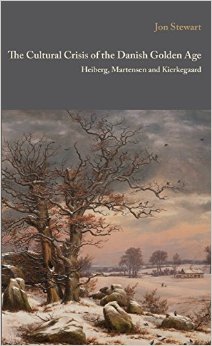
A
Forgotten Contemporary of Kierkegaard
Edited by Gerhard Schreiber and Jon Stewart
Date of Publication: 2016
Hardback. xiv+487pp. ISBN 978-87-635-4390-3
The present volume aims to end this silence, which has continued after Eiríksson’s death, and it marks the beginning of a serious discussion of Eiríksson’s works and ideas. The articles featured in this anthology are written by international scholars from different fields. With its strategic organization, the collection covers the key topics of Eiríksson’s writings and provides insights into his historical-cultural background. Understanding Eiríksson’s polemics with his Copenhagen contemporaries—such as Hans Lassen Martensen, Henrik Nicolai Clausen, N.F.S. Grundtvig and Søren Kierkegaard—on some of the main theological issues of the day sheds light on the period as a whole and provides a new perspective on the complex and diverse discussions concerning religion in the Golden Age. With its first international bibliography on Eiríksson, an accurate and reliable edition of the auction catalogue of Eiríksson’s private library and its context-sensitive indices, this anthology will be a solid foundation and ideal starting point for any future research on this almost forgotten thinker.
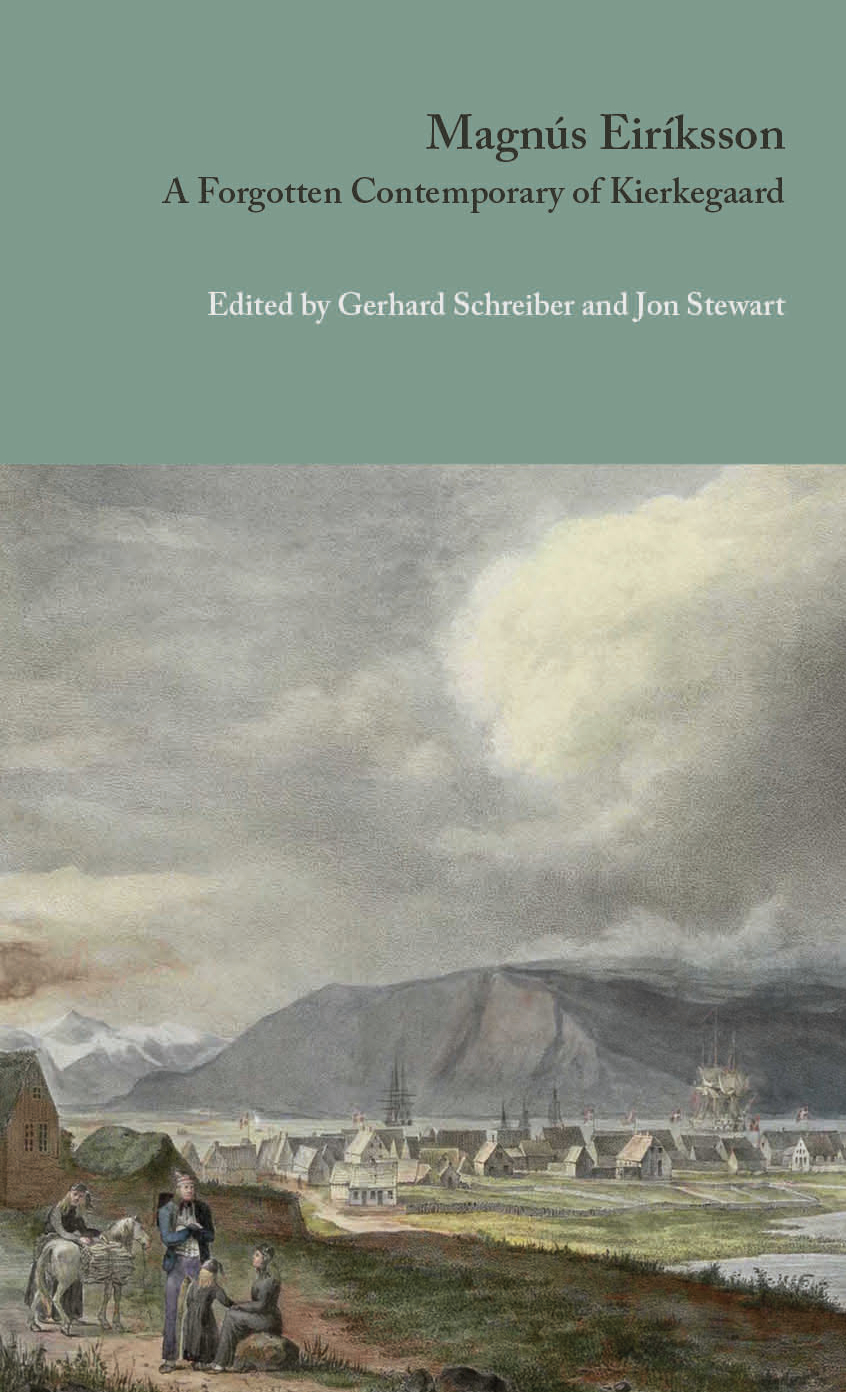
The series Danish Golden Age Studies is published by
See also the translation series
Jon Stewart©2007-2021
